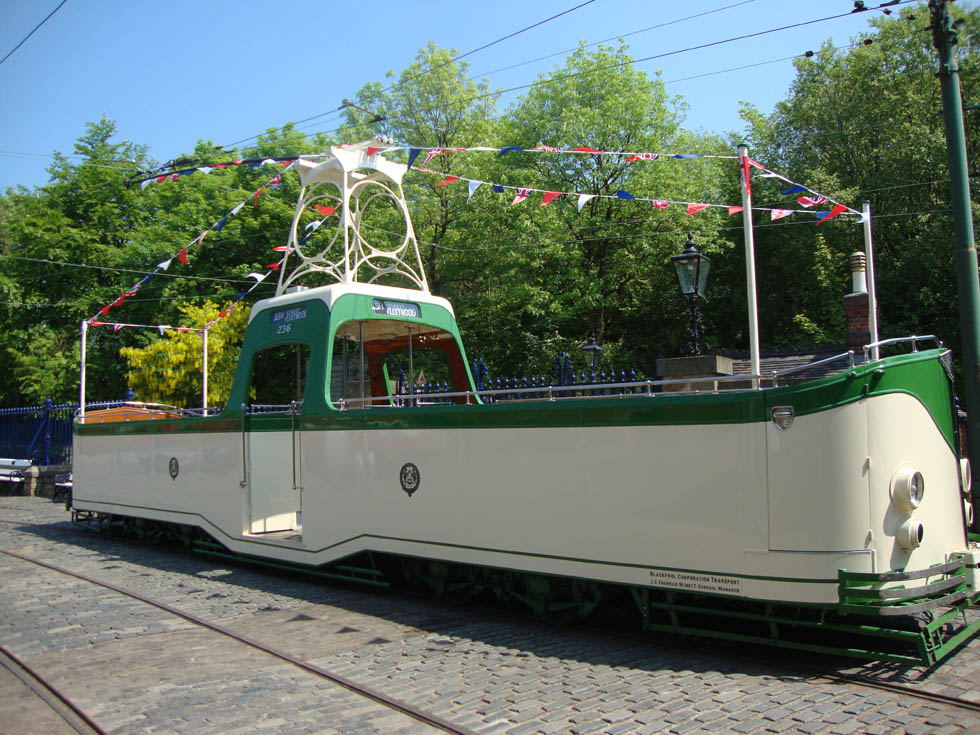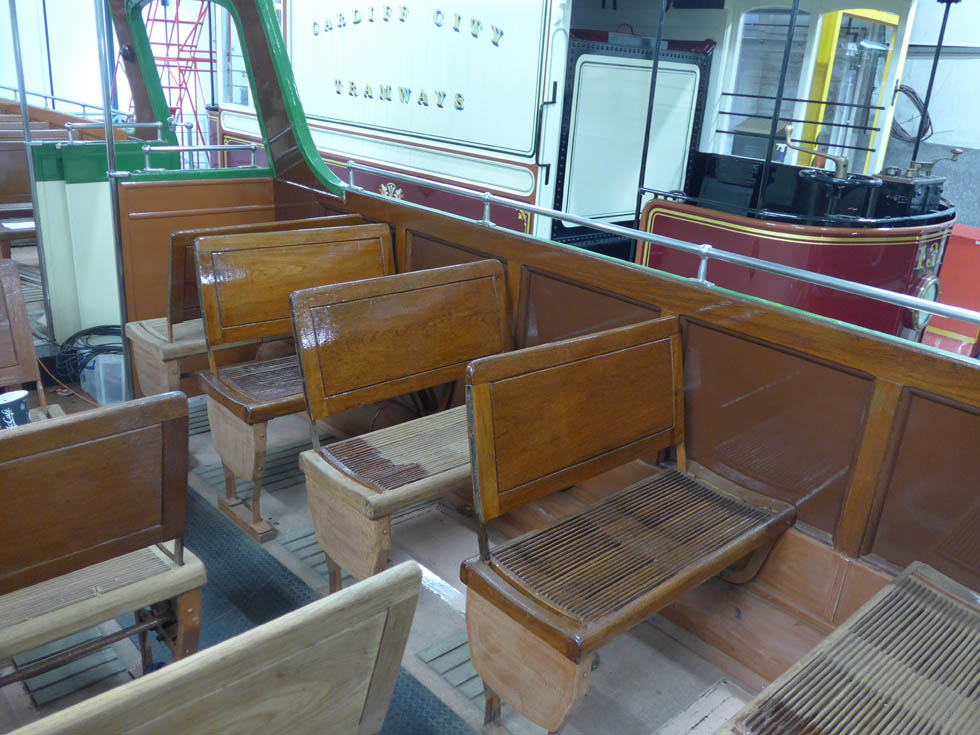
The winter closure has given the Workshop team the opportunity to carry out further restoration work on Blackpool boat 236. This car was restored about 5 years ago, prior to its permanent move to Crich, by Blackpool Transport Services, with financial assistance coming from the Tramcar Sponsorship Organisation and the Fylde Tramway Society. This work did not include returning the interior to its original 1934 condition. Instead, 236 has retained the toffee coloured paintwork and painted seats it carried in its later years of service at Blackpool. Much of the interior woodwork, including seats and framing, is teak, which was originally varnished, and we wanted to return the car to this condition, especially as the paint was blistering in places. At the same time, we are taking advantage of the car being in the Workshop to inspect and overhaul other areas as required.
Interestingly, Blackpool seem to be using their own winter closure to carry out similar activity on 227.
Work on the interior is well advanced, despite taking longer than we originally hoped. After a number of paint removal techniques were tried, we settled on dry scraping as the best means of removing the thick layers of toffee paint, grey primer, heritage pocket fluff and old varnish. Each seat base has 26 deep, closely spaced slats, which are awkward to scrape, and the team has even resorted to making its own scrapers in order to get into all the gaps and crevices. We have found it takes about 2 days’ effort to scrape and sand one double seat unit ready to varnish, and there are 28 units on the car. The removal of paint has also revealed a number of repairs which have been made over the years, using a different (inferior) timber, and we hope to have time to replace these before the new season starts on 18 March, using spares from similar Blackpool seats we have in store at Clay Cross. The end result looks lovely, when the seats have been varnished, and the non-teak components have been painted in the chocolate brown originally used (same as 167’s interior).
The first photo shows work on the South end in various states of completion. Most seat backs in this picture have been stripped and varnished, as have some of the seat bases and the body side framing. The side panels have been repainted chocolate, whilst the seat support rail, seat frames and the bulkhead by the doorway are still in toffee.

The second photo shows a stripped and an unstripped base on the North end, with body sides still in the all-over toffee paint which we are replacing.

Whilst 236 has been in the Workshop, we have been carrying out maintenance on the air brake system (including fixing a slow leak from one of the motorman’s valves), overhauling the sanding mechanism, overhauling the life guards, and commissioning the car ready for service when the season starts again on the 18th March.
If time permits we will replace the lino in the centre platform footwell, as this is heavily worn, sort out an intermittent issue with the conductor’s bell system, and rectify any defects with the external paintwork before applying a fresh coat of varnish.
Work on 236 has been led by our Coach Painter Matt Linaker, whilst also using Workshop volunteers to assist with the work. Rolling Stock Engineer Peter Bird and Coach Builder Richard Stead have also been assisting when required.
We look forward to seeing 236 back in service on the first dry, sunny day after we re-open, with its interior looking 80 years younger.

